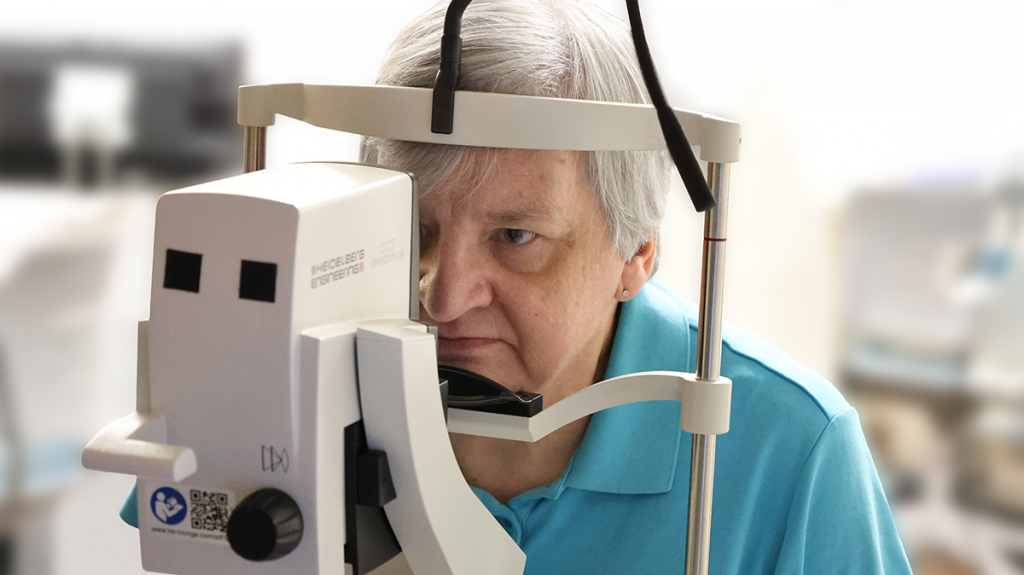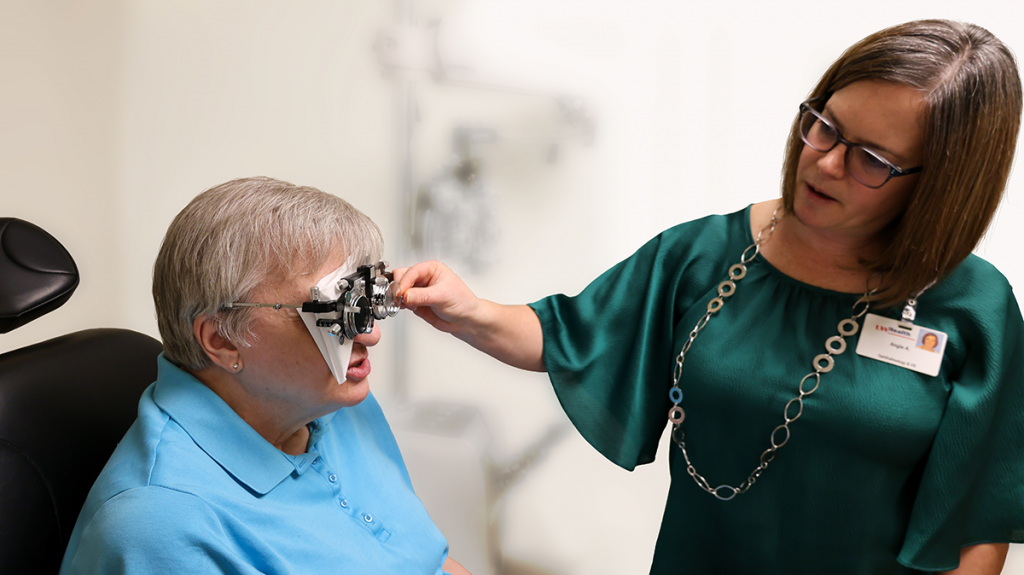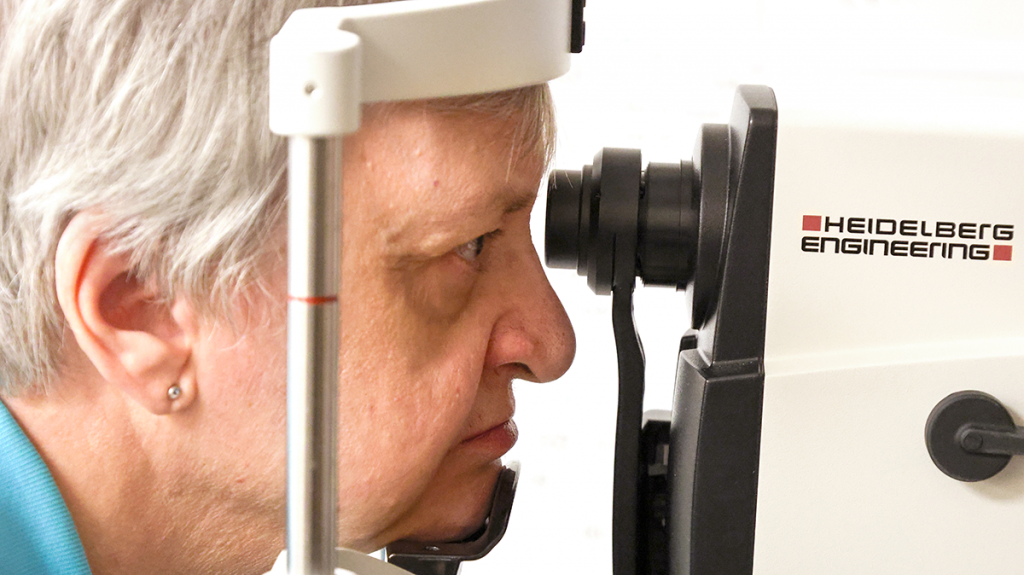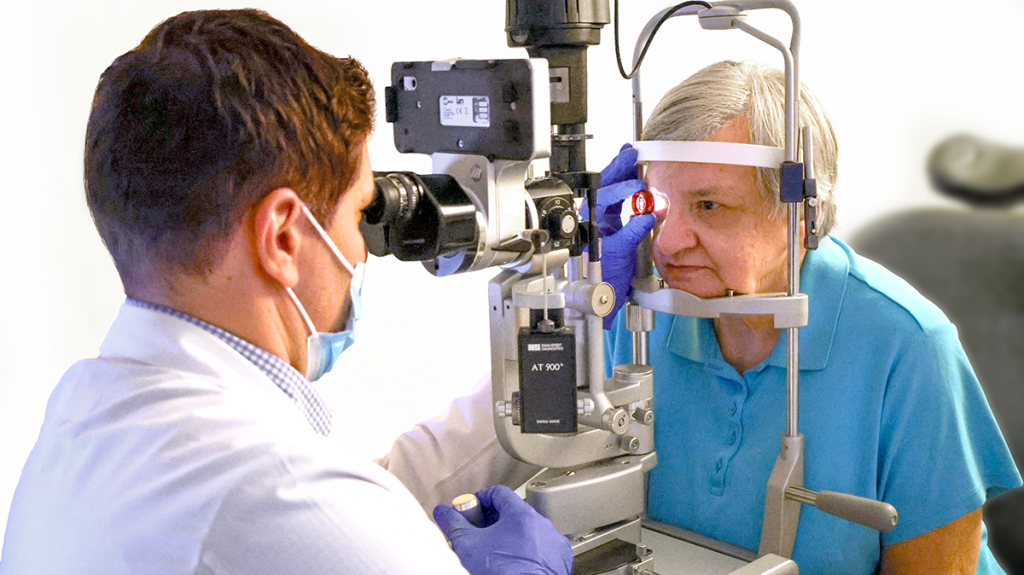When Paulette Quick was diagnosed with age-related macular degeneration (AMD), it came as a complete shock. As a former CPR instructor and amateur radio operator, she hadn’t noticed any symptoms. It was only after a routine eye exam that her local doctor referred her to a specialist at UW Health in Madison for further diagnosis.
“I didn’t suspect a thing,” recalled Paulette. “I wasn’t noticing anything at the time. But I wasn’t realizing that my right eye was compensating for my left.”
Under the care of UW Health retina specialist Barbara Blodi, MD, Paulette was diagnosed with neovascular age-related macular degeneration, or nAMD.
AMD is the leading cause of vision loss for older adults. Neovascular AMD is a specific type of AMD, known as ‘wet’ AMD that affects central vision. It occurs when abnormal blood vessels grow in the back of the eye. These blood vessels leak, causing fluid to build up and damage the macula, the central part of the eye, responsible for sharp, central vision.
The most common treatment for wet AMD is an injection of a medicine called anti-VEGF into the eye.
”These medicines help stop bleeding and leaking of fluid from abnormal blood vessels in the back of the eye,” explained Dr. Blodi. “The injections may improve vision or slow down vision loss. The duration of each anti-VEGF injection is typically 1 – 3 months, so most people need to get multiple injections for many years.
Doctors typically use a ‘treat and extend’ method to determine how often injections are needed. Patients like Paulette often need to visit the doctor every four weeks for a check-up. During these visits, an ophthalmologist uses Optical Coherence Tomography (OCT) to take pictures of the back of the eye. If fluid is detected, an injection is given.
Researchers in the Department of Ophthalmology and Visual Sciences’ Clinical Eye Research Unit (CERU), are part of a large, multi-center clinical trial aimed at testing the efficacy of a new in-home testing method, aimed at providing better – and easier— treatment for patients like Paulette.
“The main objective of this study is to determine if the use of an at-home OCT-guided treatment results in better visual acuity outcomes and/or fewer injections over a two-year period, compared to the standard ‘treat and extend’ dosing method,” said Kathleen Schildroth, MD, the study’s principal investigator. “Patients use an at-home OCT machine, similar to what is used in the doctor’s office, to scan their eyes. The images are reviewed, and, if fluid is detected, the patient is scheduled for an office visit.”
The study is funded in part by the National Eye Institute (NEI), with additional support from the Roche Group and Notal Vision.
Dr. Blodi, referred Paulette to the trial in November 2024.
“I knew immediately I wanted to be part of the trial,” Paulette said. “I have a lot of curiosity, and I like to be part of something new. Also, I knew that whatever information would be gathered could help other people.”
The Home OCT device is approved by the Food and Drug Administration for imaging at home between regularly scheduled office visits but is not designed to replace regularly scheduled office visits, explained Kris Dietzman, study coordinator.
The daily scans of Paulette’s retina are sent to Notal Vision, the device company, where they are evaluated using special artificial intelligence-based software.
“If fluid is detected, the system sends an alert to Dr. Blodi, who then reviews the scans online and decides if Paulette needs to come to the clinic,” Dietzman said. “If the answer is yes, Paulette is scheduled for an in-office visit within seven days.”
Paulette has found the at-home device easy to use. But even more importantly, it provides her with a sense of comfort.
“It’s working very well. I do the scan on the home OCT machine early in the morning, and it’s very fast – about a minute,” she said. “I like knowing that if fluid shows up in my macula, I will be taken care of right away.”
Based on her daily in-home scans, Paulette has been receiving injections approximately every six weeks.
“I notice that when I’m getting close to the six-week mark between injections, I start having trouble reading,” she said. “The injections have improved my condition. I am seeing better in my left eye than before I started getting injections. As of now, my macular degeneration isn’t holding me back, and I feel happy knowing that I’m going to be able to continue my normal activities because of the great care I am receiving.”



